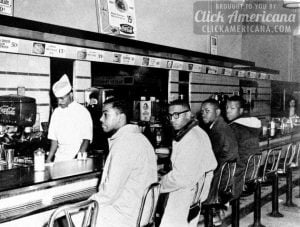Sadly for fans of the genre, however, there are many quality silent movies that will never be seen again because — as it turns out — a shocking number of these iconic films have been lost forever.
Below, see the surprising reasons why so many old silent movies have completely disappeared — leaving us to wonder what cinematic treasures have been lost to the ages.

A short – but powerful – silent film era
By David Pierce, excerpted/adapted from The Survival of American Silent Feature Films: 1912-1929
via the Council on Library and Information Resources and The Library of Congress (September 2013)
The era of the American silent feature film lasted from 1912 to 1929 — no longer than the period between the release of The Godfather (1972) and The Godfather: Part III (1990).
During that brief span of time, filmmakers established the language of modern cinema, while the motion pictures they created reached the height of artistic sophistication. Going to the movies became the world’s most successful form of popular entertainment, and these films — with their recognizable stars and high production values — spread American culture around the globe.

The silent cinema was not a primitive style of filmmaking, waiting for better technology to appear, but an alternate form of storytelling, with artistic triumphs equivalent to or greater than those of the sound films that followed.
Few art forms emerged as quickly, came to an end as suddenly, or vanished more completely than the silent film. Once sound became the standard form of narrative filmmaking, with the exception of some classics available for educational screenings from the Museum of Modern Art, the masterpieces of the era largely disappeared from view.

Nearly all sound films from the nitrate era of the 1930s and 1940s survive because they had commercial value for television in the 1950s, and new copies were made while the negatives were still intact. Unfortunately, silent films had no such widespread commercial value — then or now.
Nearly 11,000 silent feature films were produced, yet today, just 80 years after the silent film era ended, only a small proportion exists to be seen.
This report covers the survival of the American silent feature film, describing its cultural significance and the statistics and impact of its loss. This statistical analysis cannot reflect the elements of entertainment value and artistic achievement that are gone forever.

What survives, and what does not
All the features of Buster Keaton, Charles Chaplin and Harold Lloyd, the films Mary Pickford (shown below) and Douglas Fairbanks made during the peak of their popularity in the 1920s, and the big epics — from The Birth of a Nation (1915) to Wings (1927) — still exist.
But for every film that survives, there are half a dozen that do not, and for every classic that is seen today, many more of equal importance at the time are now missing and presumed lost.
Much of what survives is the result of the efforts of US and international film archives curating their collections — identifying titles of interest and then actively seeking copies, building relationships with rights-holders, and occasionally acquiring entire collections.

More common than enthusiastic stars, however, were unsentimental businessmen, such as producer Samuel Goldwyn.
In response to the Museum of Modern Art Film Library’s inquiry about the destruction of sets on the backlot he had taken over from Pickford and Fairbanks, Goldwyn replied, “[You] must realize that I cannot rest on the laurels of the past, and cannot release traditions instead of current pictures.”
The films that survive provide the breadth of silent film culture — it is still possible to view the full range of productions — but we are missing the depth, as what survives are representative examples.
Scholars cannot adequately document the art and science of filmmaking without primary sources — the films themselves — thus making it challenging, if not impossible, to write in depth about many of the people and companies that produced these films.

Silent movie actresses remembered
Much of Mary Pickford’s work survives because she owned many of her films, and sent motion pictures in which she starred to the Library of Congress in 1946.
“I wish to say to you,” she wrote, “how happy I am that my pictures will be housed in the Library of Congress and how greatly I appreciate the honor conferred upon me by your wish to have them there.”
Of her 48 features, eight films from the first three years of her career are lost, but the rest survive. This is a very good survival rate compared with that of many of her peers.

Pola Negri [below] became a star in Germany, and the American period of her silent film career, from 1923 to 1928, continued her worldwide fame. Although Paramount’s best directors guided her, the American films seldom matched the quality of her early films in Germany.
Only six of her 20 starring American films survive — the Museum of Modern Art bought a print of Mauritz Stiller’s Hotel Imperial (1927) from Paramount, as did George Eastman House with Barbed Wire (1927). A Woman of the World (1925) exists in its complete American release version, and three others in their foreign versions. There is no trace of the 14 other titles.

Of the 39 features that screen “vampire” Theda Bara made between 1914 and 1919, only two survive. Norma Talmadge was a star of “women’s pictures” from 1916 through to the transition to sound, yet only 28 of her 48 starring features survive in complete form.
Only two of the 34 films dramatic actress Pauline Frederick made before her career triumph in Madame X (1920) are known to exist. And the story is little better for Swanson herself, with only 15 of her 38 features surviving in complete 35mm editions.

Actors whose work survived after the silent movie era
We are fortunate to have all the Douglas Fairbanks films of the 1920s that established the popular images of Robin Hood, Zorro, The Three Musketeers, and pirate adventures.
Whether you’ve seen the films or not, it is Fairbanks’ representations of these characters that live today, filtered and morphed over the years by Errol Flynn, Antonio Banderas, Michael York, and Johnny Depp.
But we cannot follow the career of Tom Mix, who transformed the western from its Victorian theatrical melodrama roots into contemporary action narrative. Only twelve of Mix’s 85 lighthearted westerns for Fox survive in their original-release versions.

Greta Garbo in the silent movie The Divine Woman

Some of the lost silent movies
If popular culture is reflected through entertainment, then where are the major blockbusters of their day?
There are no known copies of The Rough Riders (1927), Victor Fleming’s tribute to Theodore Roosevelt in the Spanish-American War. Who has seen the surprise hit of 1924, the independently-produced The Dramatic Life of Abraham Lincoln, which codified the Lincoln myth for years to come? (Read a review of that movie here: ‘The Dramatic Life of Abraham Lincoln’ worthy of highest praise (1924))
Aquatic ballerina Annette Kellerman was a personality of such magnitude that her life story was filmed in Technicolor as Million Dollar Mermaid in 1952, but today we have no trace of A Daughter of the Gods (1916), her “million dollar movie” filmed on location in Jamaica. Despite three reissues and Kellerman’s appearance in a “tasteful” and widely-discussed nude scene (both conditions that might have encouraged the film’s survival), the film has vanished.

For many other titles, sometimes only a tantalizing fragment exists. Only a single reel survives of the only missing Greta Garbo feature, The Divine Woman (1928). Six of the films by director Lois Weber are missing more than half their reels.
Even when a film does survive with its content intact, its experience can be substandard because of poor quality or worn elements. The visual beauty of Tod Browning’s West of Zanzibar (1928), with Lon Chaney, and John S Robertson’s The Single Standard (1929), with Greta Garbo, are compromised because they were copied from heavily worn prints.
Beggars of Life (1928), with Wallace Beery and Louise Brooks, survives only in a single original 16mm copy. Beautifully staged and photographed films like Herbert Brenon’s A Kiss for Cinderella (1925), Roland West’s The Dove (1928), and Raoul Walsh’s The Monkey Talks (1927) each have one entire, critical reel copied not quite in time that exists as an oily, splotchy, flickery muddle of decaying and barely legible images.
Meanwhile, innumerable low-budget westerns and program pictures exist in immaculate original prints barely used since their original release.

Silent movies: So much of our cultural legacy is gone
Cinematic adaptations would tell us much about the impact of popular plays and novels. Among the missing are Main Street (1923) and Babbitt (1924), based on the bestsellers by Sinclair Lewis, America’s first author to win the Nobel Prize in literature; and The Beautiful and Damned (1922) and The Great Gatsby (1926), contemporary, on-the-spot adaptations of F Scott Fitzgerald’s novels.
Adaptations from the stage fare no better. Brewster’s Millions is a comedy of inheritance from a 1906 play that has been filmed eight times since 1914, most recently in 1985.
Clearly, the story resonates across the century from our great-grandparents’ time to today, but three silent versions of Brewster’s Millions — a 1914 version with Edward Abeles, who created the role on stage; a 1921 version with Roscoe “Fatty” Arbuckle; and a 1926 version with Bebe Daniels — are as lost to history as their live theatrical counterpart.

Humorist and commentator Will Rogers was one of the most well-known and beloved American public figures of the 1920s. He starred in 16 silent features, of which only five survive. Other popular comedians are even less well represented.
One such is Raymond Griffith. Critic Walter Kerr tried to reestablish Griffith’s reputation in the 1970s in his book The Silent Clowns. Kerr judged Griffith to be just as funny, just as talented, and just as important as Charles Chaplin, Buster Keaton, and Harold Lloyd. Nearly every one of their films survived to be seen by later generations.

Kerr noted that “one reason for the neglect of Griffith’s films today is that so little of his output is available. Of the nine or ten starring films he made between 1925 and the end of the silent period, only three can be seen at the moment; a fourth — even perhaps a fifth — is known to exist, but is not yet in museum circulation. It is difficult to develop a new audience for a man who is more than half invisible.”
History is told by the winners, and for film history, survival alone can be sufficient to enter the pantheon.




















One Response
One reason why so many silent movies are lost is that they were destroyed in warehouse fires. 20th Century Fox studios suffered a fire in 1937, and MGM had a similar fire in 1965. In both cases, the studios lost large numbers of their nitrate films shot before 1930.